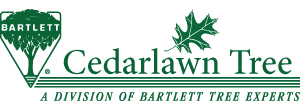Poison Ivy Control
It is that time of year when people start noticing and need to be on the lookout for poison ivy. Most people can recall the old association “leaves of three” …. Being aware of the form it can take is also important to avoiding contact with plants. Yard maintenance activities often reduce its presence to isolated stems peeking through plantings or wood lines here and there. However, more mature plants can adhere to trees and climb their way up tree trunks. 
In less maintained areas poison ivy can take on a ground cover form. Poison ivy spreads in locations primarily through the digestion of its fruit (small, round, grayish-white) by birds with the seeds passing through the birds still viable for germination where deposited.
Urushiol is the component of the plant that is capable of causing rashes in people. It is an oily liquid in the sap of poison ivy plants. While often contacted by humans when touching leaves of poison ivy, people can also get rashes by coming in contact with roots and stems in the off-season long after the leaves have dropped. Rashes can additionally be caused when touching anything that has come in contact with the urushiol. This includes clothing, tools and even pets.
 Control of poison ivy can best be obtained by spraying an appropriate herbicide. Annual applications may be necessary to eradicate areas of poison ivy and prevent new infestations. Here at Cedarlawn we begin our poison ivy treatments in July.
Control of poison ivy can best be obtained by spraying an appropriate herbicide. Annual applications may be necessary to eradicate areas of poison ivy and prevent new infestations. Here at Cedarlawn we begin our poison ivy treatments in July.




